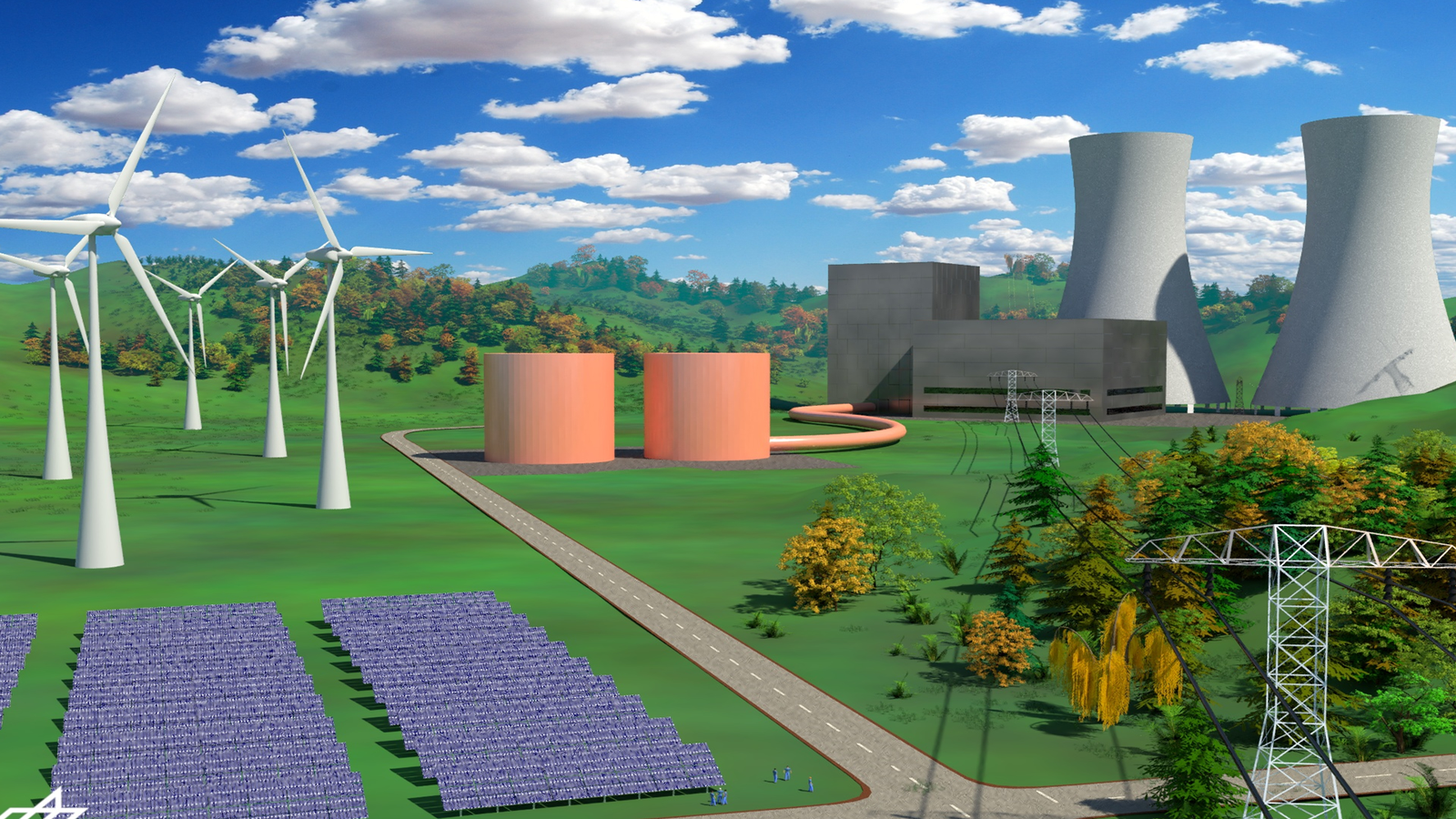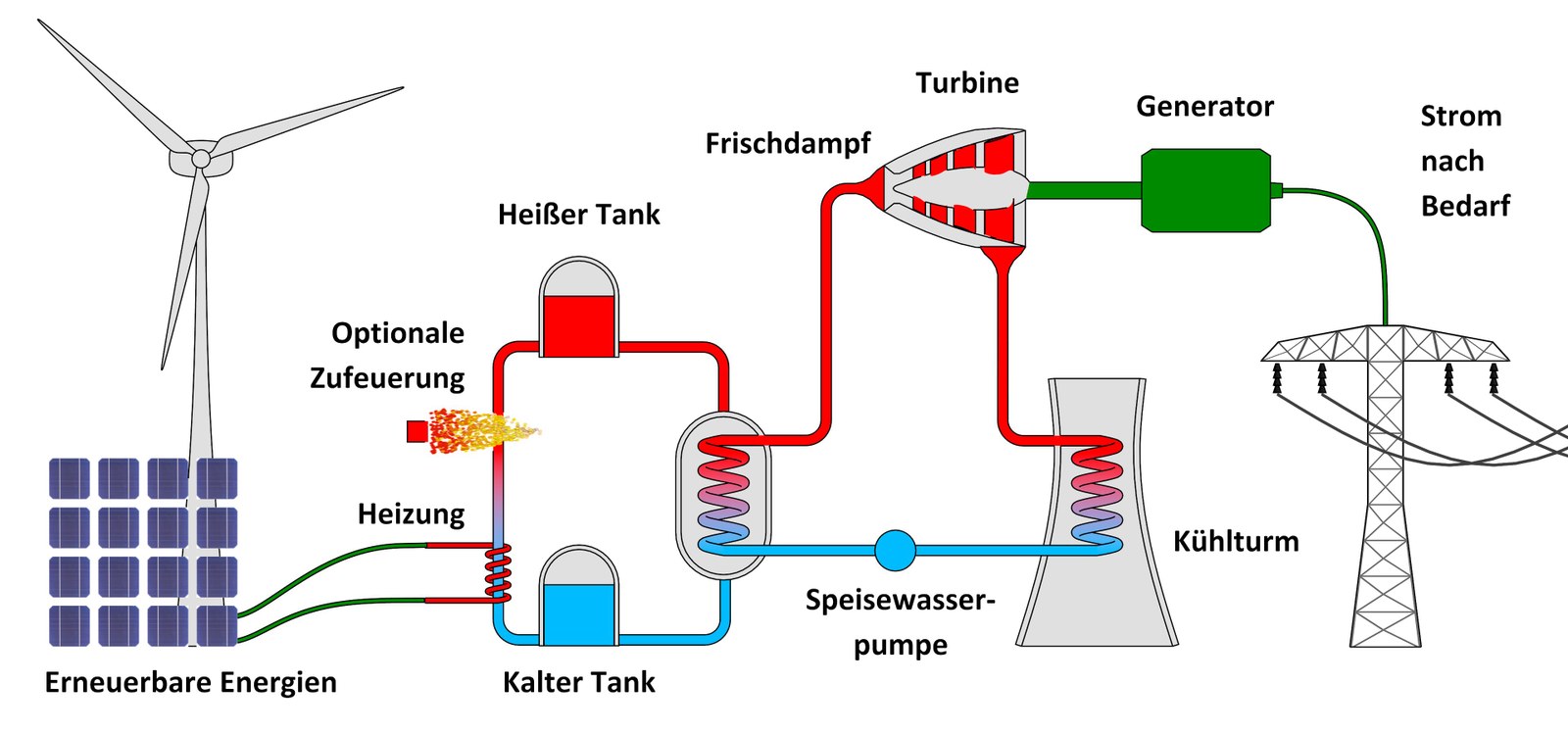Department Thermal Storage Power Plants

The success of the global decarbonisation of the energy system depends to a large extent on how quickly and in what form conventional fuels such as coal and gas can be replaced by CO2-neutral energy sources. It is desirable to maintain the controllable and reliable output of power plants at all times and to continue to utilise part of the existing power plant infrastructure.
For a successful transformation of the global energy system, sufficient secure power must be maintained in the grid. Thermal storage power plants do not replace power plants, but merely substitute their fossil fuel.
Thermal storage power plants are able to remove fluctuations in electricity from variable renewable generation from the grid and instead supply electricity to the grid as required. They therefore serve to refine variable electricity generation from renewable energy sources (such as photovoltaics and wind) and, just like conventional power plants, supply controllable electricity in line with the current demand of electricity customers.
Our aim is to develop and implement concepts for covering the residual load with CO2-neutral energy through the use of thermal storage technologies in an international context. The focus here is on the implementation of thermal storage within the framework of VACs.
Thermal storage power plants are an innovative class of thermal power plants with extensive thermal energy storage that can be heated electrically. This advanced technology enables the efficient utilisation of renewable energies and a demand-oriented supply up to renewable base load coverage.
In combination with heat consumers such as industrial companies and district heating networks, these plants can supply electricity and heat as required in a highly efficient combined heat and power system. Both existing power plants such as coal, gas or other conventional power plants can be converted (so-called 'repurposing') and new plants can be built in connection with the expansion of renewable energies.
The advantages of heat storage power plants are numerous:
- Technologically mature: VACs are already a technologically available option for large storage depths in the range of several Gigawatt hours (GWh).
- Acceleration of the expansion of renewable energies: By utilising existing infrastructure, VACs make a significant contribution to accelerating expansion scenarios for renewable energies.
- German technology leadership: German industry has a strong technological presence in the various VAC technologies.
- Realistic achievement of expansion targets: The expansion targets for renewable energies and the resulting storage requirements are so challenging that they can only be realistically achieved through the parallel utilisation of all technical possibilities, including VACs.

Our specialisations include
- Consultancy: Scenario-related advice on the use of VACs in conjunction with other technologies for industry, the energy sector, funding institutions and political bodies.
- Demonstration: Launch of demonstration plants for the purpose of decarbonising the global energy system and development of concrete project proposals for VACs with the involvement of other departments, institutes and external partners.
- Utilisation of existing infrastructure: Identification of opportunities to utilise existing infrastructure.
- Economic evaluation: Development and use of tools for site evaluation, technology-neutral independent investigation of the economic boundary conditions, also in comparison with other decarbonisation technologies.
- Modelling and evaluation: Modelling, evaluation and identification of transformation paths for industry and the energy sector with VAC.
- Additional benefits: Investigation of further additional benefits to the arbitrage model such as grid serviceability, balancing energy, direct marketing.
- Network formation: Formation of a network in the field of "repurposing" of conventional power plants and for the new construction of future plants.
